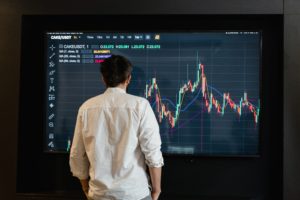2020 saw a 4% increase in individual investors, likely due to a combination of more time at home during quarantine, eye-catching headlines about Robinhood, how easy it is to start trading from your smartphone, and Reddit threads about GME stock. Considering these new participants who are entering the market to sift for gold on their own, we wanted to investigate why high-wealth investors also decide to handle their investments themselves and forgo a financial advisor.
38% of investors who don’t use an advisor cited the reasoning that they believe they can do a better job. This population hovered around 43% in 2016, so the trend is slowly but surely pointing towards an awareness that this is not necessarily the case. This could be due to the growing realization that active investment management – which typically requires an advisor – yields better risk-adjusted returns than passive investing.
What is the difference between active and passive investment management?
Active investment management requires individual portfolio assessment against market environments. For NEST portfolios, we receive economic data from the most reputable sources on a weekly basis, and Sean analyzes it to gauge trends and behavior, including where the market is headed.
Many active portfolio managers use modern portfolio theory to build their models, and then compare each segment of that portfolio against their peer’s performance. At NEST, we consider portfolio theory (yes, even “modern” portfolio theory) to be outdated. Instead of comparing against our peers’ portfolios, we set positive returns for each of our models, mapping that positive return towards the investor’s risk tolerance profile.
While many active investors’ goal is to simply outperform standard benchmarks (such as the S&P 500), NEST doesn’t use outside comparisons to assess our success. We are successful when we are achieving – or exceeding – the rate of return associated with each model. (However, because of this internal standard, our models are able to consistently outperform portfolios such as the S&P 500.)
Ultimately, that is what makes NEST portfolio management different – we don’t believe that you should be down a year, regardless of how our peers are doing.
Passive management is more common, and what individual investors usually achieve on their own. It involves purchasing assets that are held in a benchmark index, allocating a portfolio similar to that market index, and utilizing similar weighting as that index. By mirroring the benchmark portfolio, passive management is hands-off, does not require the grueling data analysis and complex spreadsheets characteristic of Sean’s workday, and can achieve the same returns as these standard benchmark portfolios, such as the S&P 500.

Which is better?
Some sources will claim that passive investment management is superior because it does yield returns without the fees associated with a financial advisor. We will agree that some active portfolio managers out there are not consistent with their returns, and thus do not warrant the fee charged for an actively managed portfolio. However, in our experience, NEST’s active investment management process is shown to be superior during periods of stress and market upheavals. When the benchmark is plummeting, and our peers’ portfolios are doing the same, NEST’s active investment management process proves to be resilient.
We also find that as your wealth increases, making errors becomes more costly, rendering active portfolio management worth the – ahem, investment (no pun intended) – in fees and financial advisor costs. You may find an added benefit in how much actively managed portfolio returns can outperform the benchmark portfolios. The two methods are not mutually exclusive, either. The best option is to seek out an advisor who can match you with a model that matches your goals and risk tolerance.
Transparency is King
Another commonly cited reason why investors do not utilize a financial advisor is because they do not believe that the advisor has their best interest in mind. There are regulations in place to protect the investor, but of course it’s understandable that an investor would be wary of someone in the finance business.
At NEST, we strive to be transparent in everything we do – from sharing our portfolio manager’s perspective on market events in the NEST Edge, to outlining our strategy and models for everyone to see.
Your goals and risk tolerance are at the center of your experience with NEST. Feel free to reach out with any questions at info@nestfinancial.net – this email address goes right t0 the partners’ inboxes!
Disclaimer: We are legally obligated to remind you that the information and opinions shared in this article are for educational (and entertainment) purposes only and are not investment advice. For guidance about your unique goals, drop us a line at info@nestfinancial.net.
Find us on:
LinkedIn Facebook Twitter Yelp






[…] planner and paying their fees can actually be detrimental to your ability to save and can outweigh the growth you’ll see from hiring a financial advisor at this […]